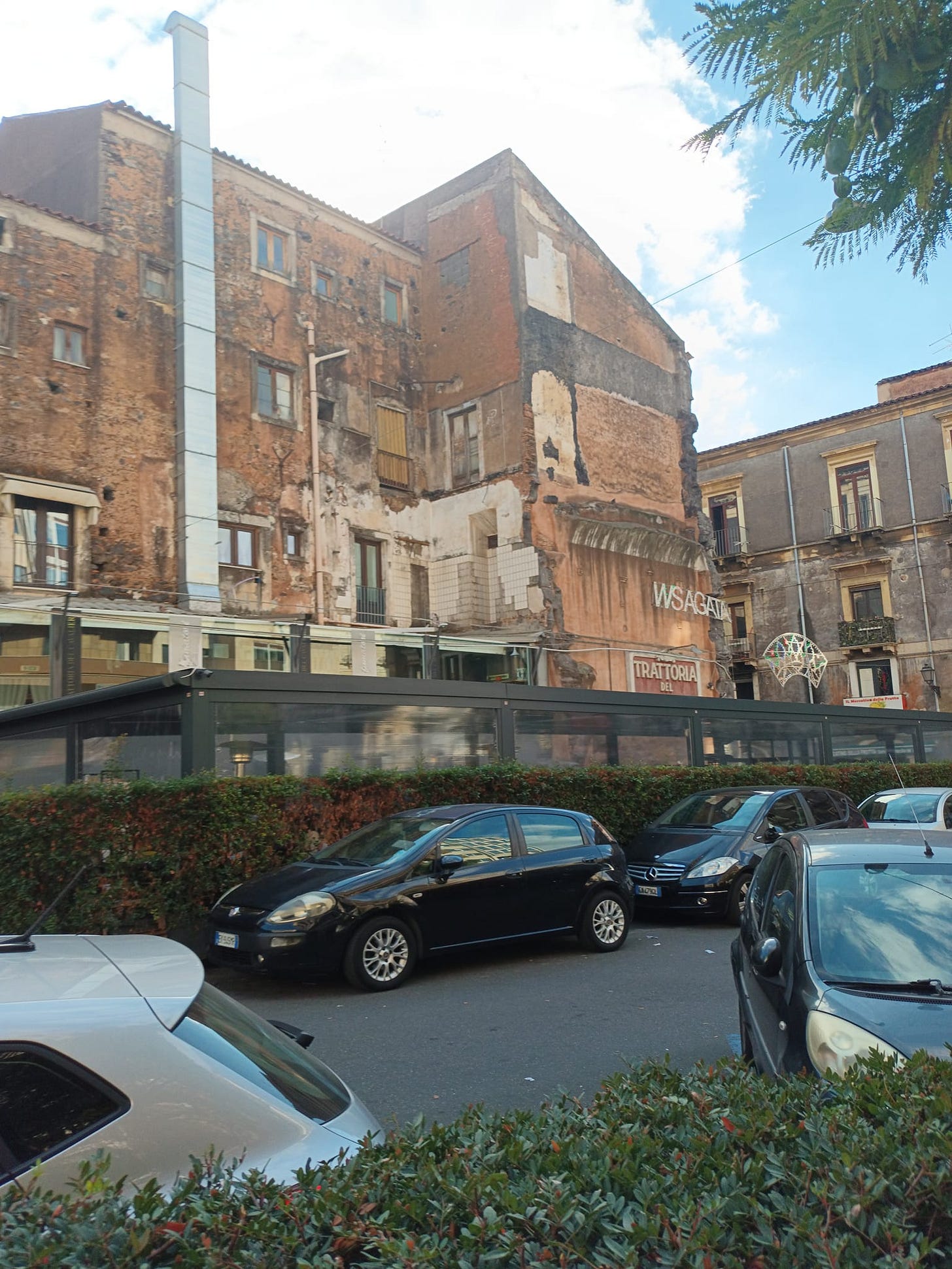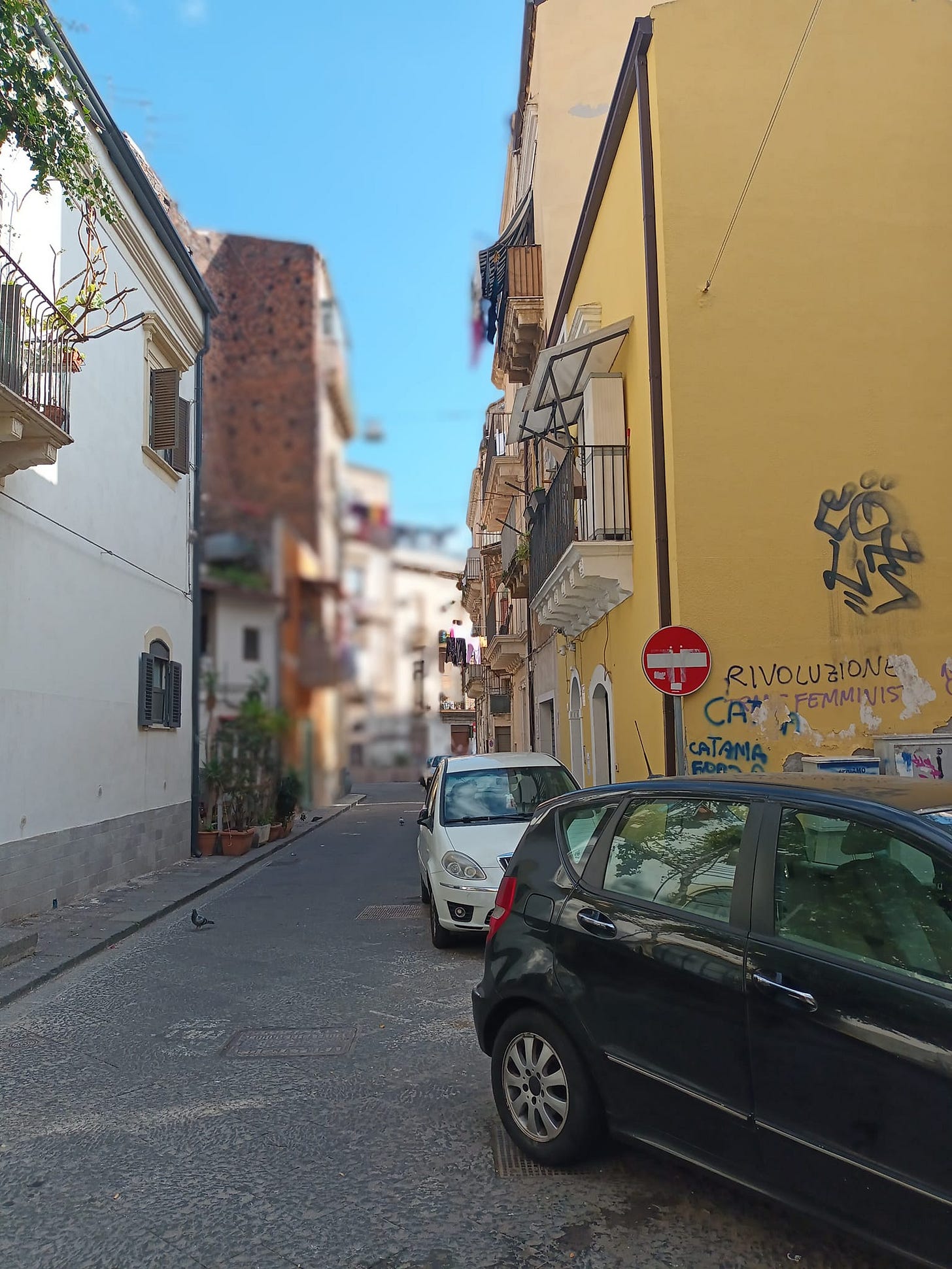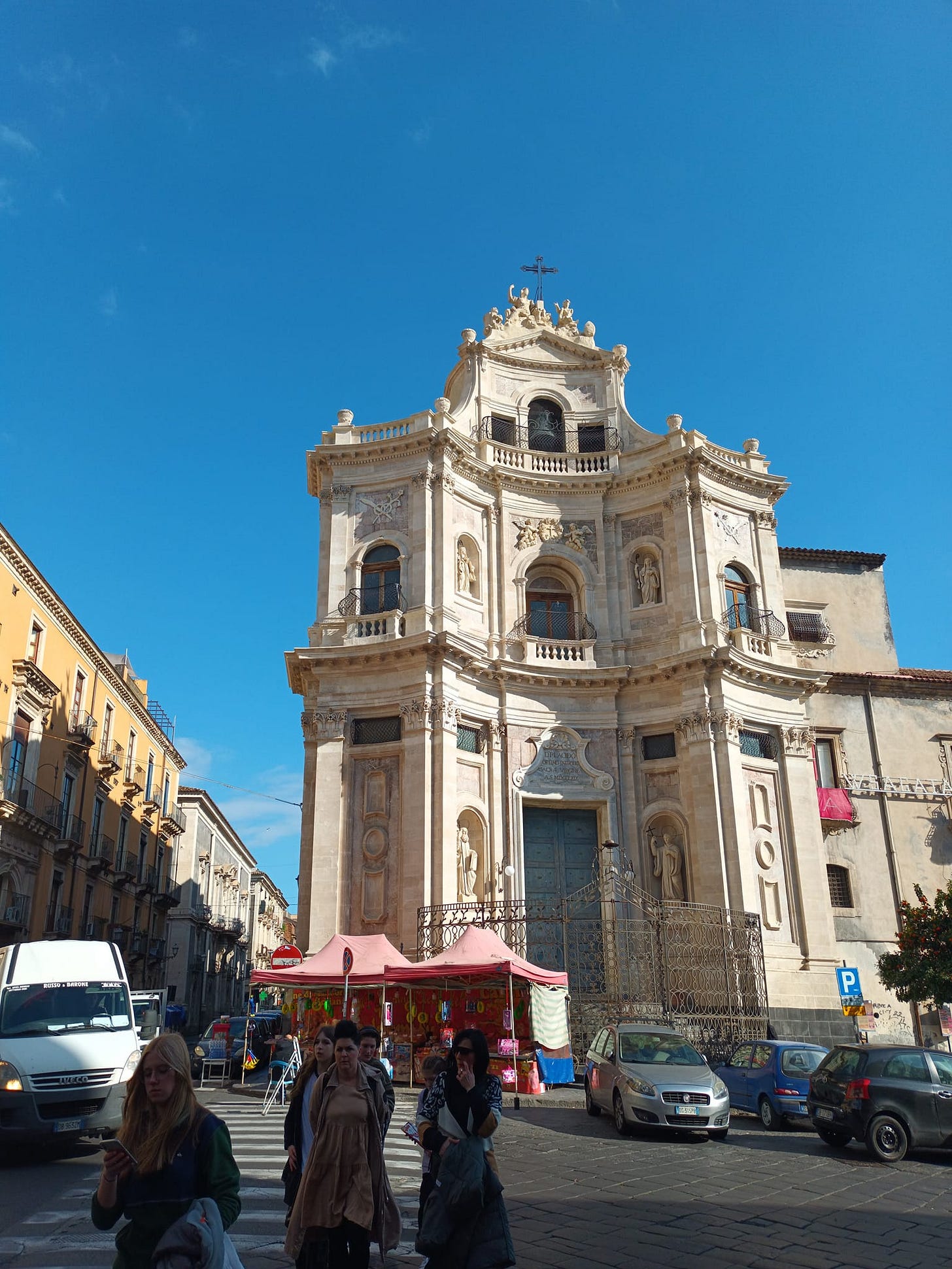Catania is a city of two faces. After enjoying on my first day, and since, the splendours of what must be one of the finest Cathedral squares in Europe, I have also been enjoying the ambience of the Cathedral; the nave is a restrained and undecorated baroque, and the sanctuary is Norman, a rare survival of many earthquakes and volcanic eruptions. The Cathedral is always open and there are regular Masses, as well as throngs of people in front of the shrine of Saint Agatha.
Catania is a city of many churches. Some of these are still active, but many, not far from the centre, are never open. All were once convents and monasteries of one sort or another, and most are now sadly redundant. It is commonly said that in the Kingdom of the Two Sicilies at its height, one in twelve of the population was a priest or a religious. This was partly to do with the religious fervour of the population and partly to do with soaking up the excess population. Nineteenth century liberals vehemently disapproved of what they termed religious idleness, and many of the convents were seized by the government at the Risorgimento; though Italian liberals like Francesco Crispi (Prime Minister from 1887 to1891 and 1893 to1896) were quite happy to soak up the excess population by encouraging emigration to Italy’s recently acquired colonies.
Catania, outside the centre, which is full of prosperous looking people, bars and boutique hotels (though the centre is very small), is also a poor city, what Sean Thomas calls one of Italy’s terrible towns. I have been round two slum areas so far. Is ‘slum’ an exaggeration? Not really.
In one area I noticed that not only were all the buildings in bad repair, and the streets full of rotting rubbish and litter, but the people bore the marks of slum dwellers: there were lots of men, predominantly young, standing around and doing very little. There were a few very small boys, no more than eight or nine, riding motor scooters without helmets, and one assumes, without licences. The shops and businesses all had that rather depressed and neglected look. The men were dressed in tracksuits - this seems to be the uniform of the economically disadvantaged. There were quite a few children in their pyjamas, which I thought surprising for late morning. This part of town is dominated, according to newspaper reports, by the Mafia. But is the Mafia dominant because the people are poor, or does Mafia dominance make people poor? What I was really seeing, I felt, was a place where unemployment (disoccupazione, the Italians call it, a good word) was endemic. No one had anything to do. One could also see the effects of malnutrition: pasty faces and thin or sometimes obese bodies.
The other area I walked around was even worse. Very close to the centre, it had been bombed in the War, and there were several very ugly modern buildings in a state of disrepair, but quite a few empty lots and a few buildings still inhabited in the lower floors but destroyed in the upper floors. Again, the rotting rubbish in the streets, and the ever present hideous graffiti. (Why does no one realise the harm graffiti does?) This was the home of immigrants, people from Africa and Asia, and there were certain shops selling Asian and African things, though lots of people standing about doing nothing as well. I was quite shocked to be approached by young men who asked me for money so they could get something to eat. Just a few hundred yards from the centre of Catania, there are people on the breadline.
Catania, incidentally, is an immigrant hub. There are numerous shops advertising halal meat, for example. Catania has always been poor, but the face of poverty is always changing. Incidentally, to end on a positive note, a huge amount of work has been done on the facades of baroque churches and palaces, but so much still remains to be done; the task is daunting. And one suspects that the worst degradation is to be found in the outlying suburbs which I have never visited.








